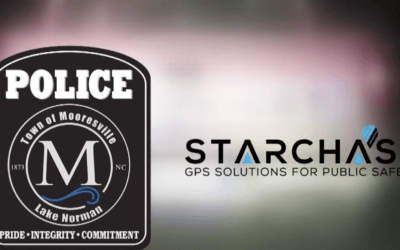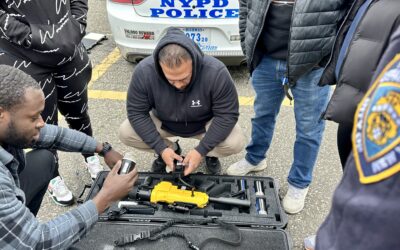Digital Transformation in Government: Tech reduces high speed police chases
By: Salsa Digital,
US company StarChase provides a range of GPS-based tech solutions to law enforcement and government around the world. One of its products enables police cars in pursuit situations to shoot a GPS tag (a small cylinder) onto a suspect’s vehicle. The GPS tag is propelled by compressed air from the police car to the target car, where it sticks.
The aim is to tag the car early on during a chase (before the speeds get very high), stop the pursuit, and then apprehend the car a little later without a dangerous, high-speed car chase. This method is supported by research that shows suspects slow down once the police presence is gone (independent research is cited in StarChase’s brochure, plus its customer data shows that on average most people slow down within one minute and forty-five seconds once the police presence is removed).
Why it was developed
The tech aims to reduce the impact of high-speed pursuits. According to an article in Government Technology a 2015 USA Today analysis showed the high public safety cost of high-speed pursuits between 1979 and 2013 — more than 5,000 bystanders and passengers were killed and tens of thousands injured in the US.
In Australia, thankfully the stats are much lower. In 2013 the Australian Institute of Criminology (AIC) released a report on motor vehicle pursuit-related fatalities in Australia and found that from 1 January 2000 to 31 December 2011 there were 218 deaths during high-speed car chases. These stats were broken down into:
- 136 alleged offenders (110 drivers and 26 passengers in the vehicle being pursued)
- 82 innocent people (37 innocent passengers in the vehicle being pursued and 45 other innocent bystanders or road users, including 6 police officers).
We were unable to find stats on injuries from high-speed pursuits in Australia, but the many news reports that come up with a Google search provide limited anecdotal evidence.
Not surprisingly, the threat to safety here and overseas has led many police departments to enforce a ‘no pursuit’ policy or ‘at the officer’s discretion’ policy. For example, in Victoria police can only chase a car if there’s a threat to public safety or the person driving has committed a serious offence. In Queensland officers can only pursue a vehicle in specific situations, such as if there is an imminent threat to life or if the person has committed or attempted murder (these are two of the four situations allowed).
Full story: https://salsadigital.com.au/news/tech-reduces-high-speed-police-chases
[wufoo username=”starchasellc” formhash=”k9kspox114pwqn” autoresize=”true” height=”1076″ header=”show” ssl=”true”]



